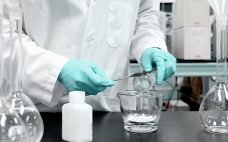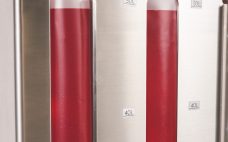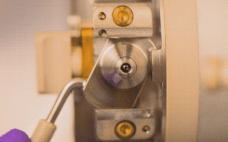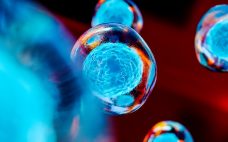This webcast features: Sarathi Vijay Boddapati, PhD, Associate Director, Formulation and Drug Product Development, Catalent Cell and Gene Therapy Formulation studies for gene therapy products are currently limited in scope and revolve around gathering stability data at frozen storage conditions. A systematic approach towards understanding degradation mechanisms followed by buffer and excipient selection is required. Catalent Cell & Gene Therapy is working towards an approach for gathering product knowledge and establishing formulation selection criteria using traditional/routine techniques that are historically…
Ask the Experts
Thermo Scientific DynaDrive SUB: Perfusion Application and Customer Experience Highlights
This webcast features: Kristin O’Neill, Principle Scientist, and William Tran, Sr. Bioprocess Engineer, Merck & Co., Inc., and Kevin Mullen, Senior Product Manager, Thermo Fisher Scientific As the demand for single-use technologies increases in terms of performance, efficiency, and ease-of-use, Thermo Fisher Scientific has introduced a next-generation bioreactor to the biopharma industry: The Thermo Scientific HyPerforma DynaDrive Single-Use Bioreactor (SUB). Building on our extensive experience, as well as nearly two decades of end-user feedback, the HyPerforma DynaDrive SUB employs a…
HCP Analysis using Mass Spectrometry: Strategies for Your Process Development Toolkit
This webcast features: Dr. Christina Morris, Senior Scientist, BioPharmaSpec Expression systems of either mammalian, yeast, or bacterial origin are commonly used as host cells for the production of biopharmaceuticals. As a consequence of using these systems, endogenous host cell proteins (HCPs) will inevitably copurify or will be coexpressed and contaminate the product material. It is a regulatory requirement to identify and monitor process-related impurities such as HCPs, and a qualitative and quantitative assessment of the components in the final drug…
Understanding Viral Clearance During Anion Exchange Chromatography by Using a Novel Design of Experiment Approach
This webcast features: Moira Lynch, Innovation Leader, Purification and Pharma Analytics, Thermo Fisher Scientific, and Zhijun (George) Tan, Associate Scientific Director, Bristol Myers Squibb Demonstrating viral clearance of a downstream process is a requirement for drug candidates such as monoclonal antibodies (mAbs) that proceed to phased clinical trials. Due to the specialized nature of viral clearance studies, these studies are often outsourced to dedicated companies, making this a costly process. This expense pushes these studies off until absolutely necessary and…
High-Quality and Cost-Effective Plasmid Platform
This webcast features: Dr. Shuyuan Yao, Chief Scientific Officer and Head of Research & Technology Development, WuXi Advanced Therapies In recent years, the demand for cell and gene therapy has increased substantially. The success in gene and cell therapy has also increased demand for plasmid DNA. In supplying the industry with high-quality plasmid DNA, key prominent market challenges are capacity availability, accelerated turnaround time (TAT), and affordability. In this presentation, WuXi Advanced Therapies will showcase how to address these prominent…
Ask the Expert: FPLC Column Selection Considerations
On 10 November 2020, BPI presented an “Ask the Expert” webinar with Dan Yukon (head of North American and global SNAP product sales at Astrea Bioseparations) on considerations for selecting analytical fast-protein liquid chromatography (FPLC) columns. With many options on the market, deciding which type and brand to use can be difficult. To help take out the guesswork, Yukon addressed a number of topics, including pressure and volume considerations; column configuration; materials of construction; frit type, design porosity, and mounting;…
Ask the Expert: Centrifugation Guided By Optical Sensors Enables Efficient, Reagent-Free Cell Separation
Ben Josey, PhD (field application scientist at Corning Life Sciences), joined BPI on 3 December 2020 to deliver an “Ask the Expert” presentation about using optical-sensor–guided centrifugation for cell therapy development. Cell-separation techniques fall into four basic categories: filtration, centrifugation, affinity purification, and emerging methods such as microfluidics and acoustofluidics. Selecting the technology best suited to an application requires careful balancing of method precision and process efficiency, the latter of which includes factors such as batch size, time, labor, and…
Ask the Expert: New and Improved Analytical Methods for Traditional and Unique Modalities
On 10 December 2020, BPI presented an “Ask the Expert” webinar with Jason Sterling, PhD (principal scientist and project director in analytical and formulation resources), and John Rockwell (group leader) of Catalent Pharma Solutions. Biophysical characterization is critical to understanding the makeup and behaviors of biologic therapies and vaccines both early in development and throughout scale-up for manufacturing. As biologics become more complex in structure and as scientists improve their understanding of the effects of structure on stability, efficacy, and…
Ask the Expert: Developing Strategic Analytical Programs for Therapeutic Peptides
Ashleigh Wake began her 15 October 2020 “Ask the Expert” presentation by pointing out that peptide products are manufactured in a “regulatory vacuum.” Peptide-product developers must be strategic in designing characterization and quality control (QC) programs. Wake reviewed available methods and explored key considerations for developing phase-appropriate analytical controls. Wake’s Presentation Because peptides overlap small- and large-molecule drugs in size, regulatory expectations differ by product size and clinical indication. Thus, analytical programs should be designed around critical quality attributes (CQAs)…
Stem Cell Derived Exosome Production in Stirred-Tank Bioreactors
This webcast features: AurĂ©lie Tacheny, Project Manager and Application Specialist, and Jorge Escobar Senior Research Scientist, Applications Lab, Eppendorf Exosomes are a population of naturally occurring, mobile, membrane-limited, 30–100 nm in diameter, extracellular vesicles containing a large number of proteins, lipids, messenger, and micro-RNAs. It was shown that they play a role in the mediation of intercellular communication, the modulation of immune-regulatory processes, tumor metabolism, and regenerative as well as degenerative processes. In recent years, there has been increasing interest…







